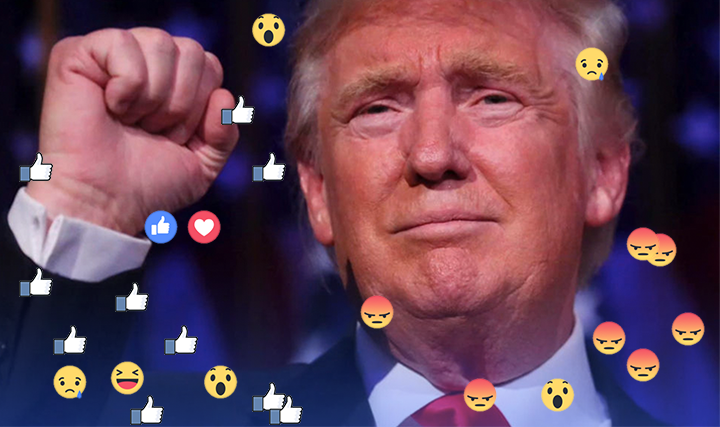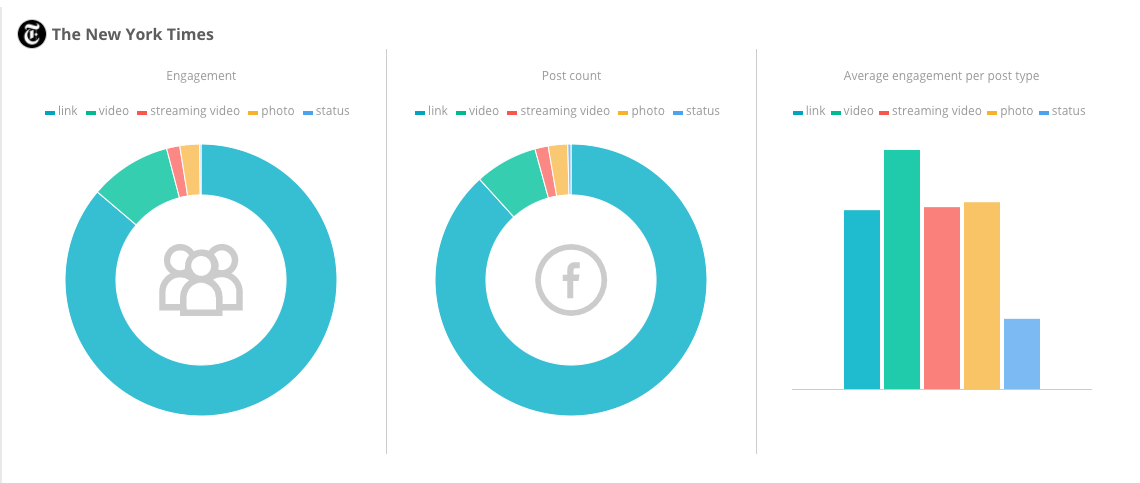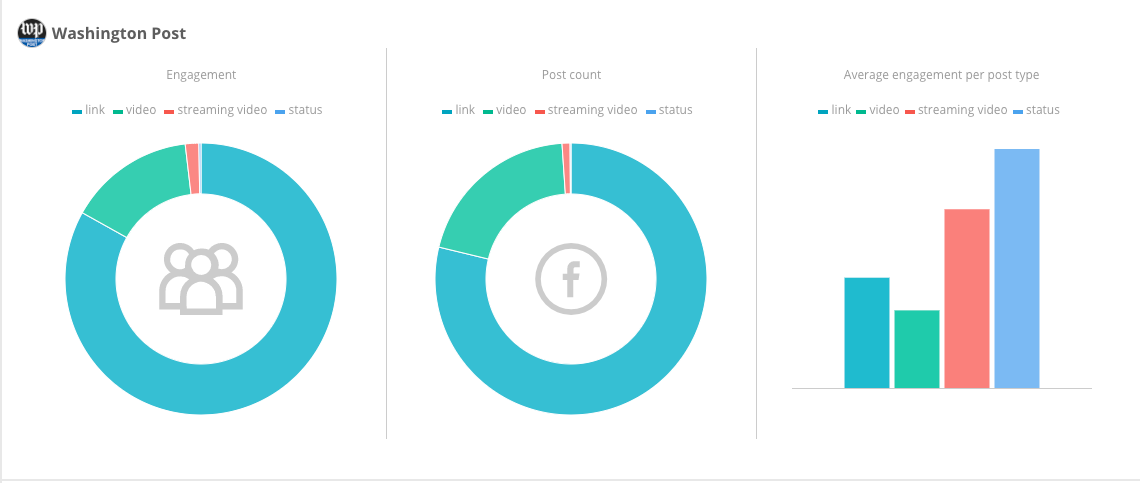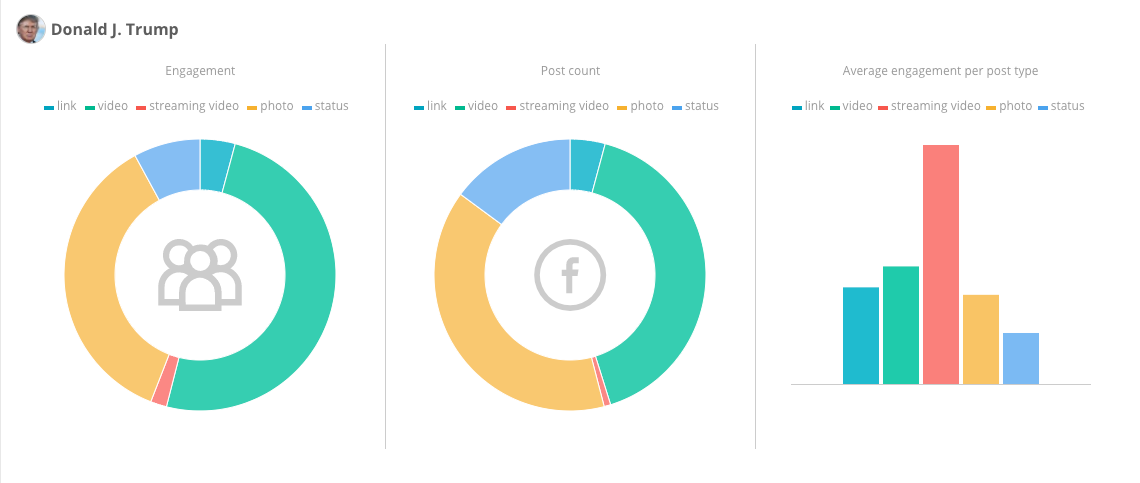
What we already know:
Donald Trump regularly criticises the mainstream news media in the USA, especially the New York Times, claiming it is unfair and one sided. He notably uses Twitter to directly address the public, but how influential is he on Facebook? We know that Facebook’s newsfeed algorithm is optimised for engagement, by design helping amplify messages that generate engagement – likes, comments, shares and web shares. More engagement means a bigger audience on the platform.
We compared the historical engagement on Facebook of Donald Trump’s own page and the pro-Trump Breitbart News with both The New York Times and Washington Post.
Looking over the last year specifically at On-Post Engagement (Likes, Reactions, Comments and Shares), a couple of things really stand out.
1. Engagement has fallen as expected post-election, settling into a steadier rhythm.
2. Breitbart and Trump have consistently outperformed the NY Times and Washington Post in terms of Facebook engagement.

There is an important caveat here – in the graph above we are looking only at On-Post engagement. The other important form of engagement on Facebook is web shares – when articles URLs are shared, usually directly from a website, to Facebook. These are absent for Donald Trump as he has essentially only a Facebook profile as opposed to an established publishing website. For Breitbart we have incomplete web shares data, meaning we cannot compare this data set.
The last 90 days
Looking at the last 90 days, numbers have settled down from the peaks around the 2016 election. Trump has consistently generated more on post engagement than either the NY Times or Washington Post.

However, web share data for the New York Times and the Washington Post is impressively high. 
Comparing the total engagement (all the on-post plus web share engagement) for Trump, The New York Times and The Washington Post over the last 90 days, the results look like this:
Donald J. Trump: 36,748,206
The New York Times: 75,362,447
The Washington Post: 60,798,462
Engagement overall for the two traditional publications is much higher than Trump’s when on-post and web shares are combined. This reflects both the behaviour of the two sets of audiences and also the type of content published by the different entities. Facebook posts come in several forms, the main ones being: Links, Photos, Videos (both live and uploaded) and text status updates. Here we can look at both the frequency of types of posts made and the engagement generated by them.
The New York Times has a fairly typical spread for a news publisher on Facebook, with 88% of their posts coming in the form of links to articles, while 9% were in the form of FB native or streaming/live video.
The Washington Post is interesting as 20% of their posts are native Facebook videos. 1% are FB live videos and links make up 79% of their output.

Trump is totally different. Firstly, he has posted a great deal less (as would be expected), with just under 400 posts in the last 90 days compared with over 4000 each for the NYT and WaPo. Secondly, the split in post type is obvious when comparing the donut graphs. Perhaps surprisingly, in the last 90 days only 1% of his posts have been using live video – something he used very effectively while campaigning in 2016. 41% of his posts are native FB videos, 39% are photos and 15% are text only status updates. Only 4% of his posts are links to articles or websites. 
A full summary of how the three entities compare in terms of post type output:

Trump moving away from streaming video/FB live may be more through necessity than choice, as it’s likely that FB live videos direct from the President of the USA would generate huge interest, despite engagement in general having fallen since the run up to the election in 2016. He’s only published 3 FB live videos in this time period, but on an engagement per post basis they perform very well.
In Summary
Trump wins in terms of on-post engagement by using images and videos. His publishing rate of about 4 posts per day is surprisingly high considering he isn’t a traditional high frequency news publisher. While they are not directly comparable, The New York Times and Washington Post have extremely strong presences taking web shares into account. If Trump was to start his own publishing website (we have already seen tentative steps into broadcasting with Trump TV), it’s quite possible that the slew of engagement and reach he already has would help to increase his reach and influence much further on Facebook and beyond.
